Ford Mustang (2000-2023) firing order — diagram & guide
Unleashing power with the Ford Mustang firing order.

Being among the holy trinity of two-door American muscle cars, the Ford Mustang has captivated broader automotive audiences for decades. It also underwent significant changes under the hood over the years, so many drivers wonder about the Ford Mustang (2000-2023) firing order.
Since you may need to replace a few plugs or coils along the way, especially as owner of high-performing variants, our team wanted to give you all the details in one guide. We’ll discuss the various engines and their firing orders for the past three Mustang generations to help you solve any issues faster.
| CAR MODEL YEAR | ENGINE | FIRING ORDER |
|---|---|---|
| 2000-2005 Mustang (4th Gen) | 3.8L V6 | 1-4-2-5-3-6 |
| 4.6L V8 | 1-3-7-2-6-5-4-8 | |
| 2005-2015 Mustang (5th Gen) | 4.0L V6 | 1-5-2-6-3-4 |
| 3.7L V6 | 1-4-2-5-3-6 | |
| 5.0L Coyote V8 | 1-3-7-2-6-5-4-8 | |
| 2016-2023 Mustang (6th Gen) | 2.3L EcoBoost | 1-3-4-2 |
| 5.2L Voodoo V8 | 1-5-4-8-3-7-2-6 |
Fourth-generation Mustang (2000-2005) firing order
To be fair, the fourth-gen Mustang started production in 1994, but the engine options were mostly the same with a few revisions.
So, let’s discuss the facelift model firing order and engine variations to give you an overall idea of the cylinder diagram and their firing sequence:
Ford Mustang 3.8L firing order
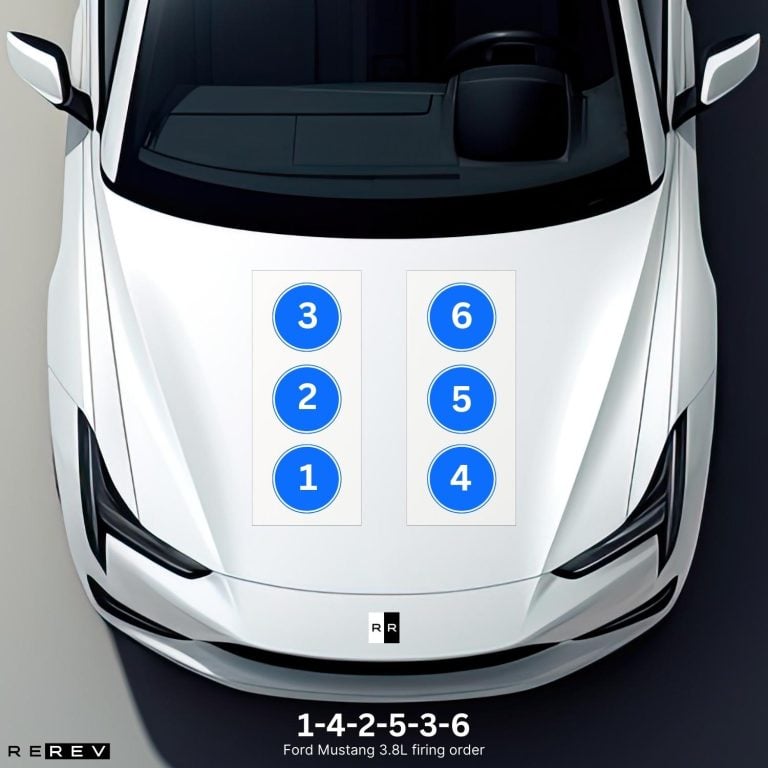
The firing order of the 3.8-liter V6 Mustang is 1-4-2-5-3-6, so we thought it was the best place to start as it was the base model back in the day.
It was powered by the OHV V6 engine produced in the Essex Ford factory, and it later on went through a slight capacity increase to 3.9-liter. The Bank 1 of the engine is on the passenger’s side and houses cylinders 1,2, and 3 looking from the radiator towards the windshield.
On the other hand, Bank 2 on the driver’s side has cylinders 4,5 and 6, so that could help you solve any issues with spark plug or ignition coil replacements.
Ford Mustang 4.6L firing order
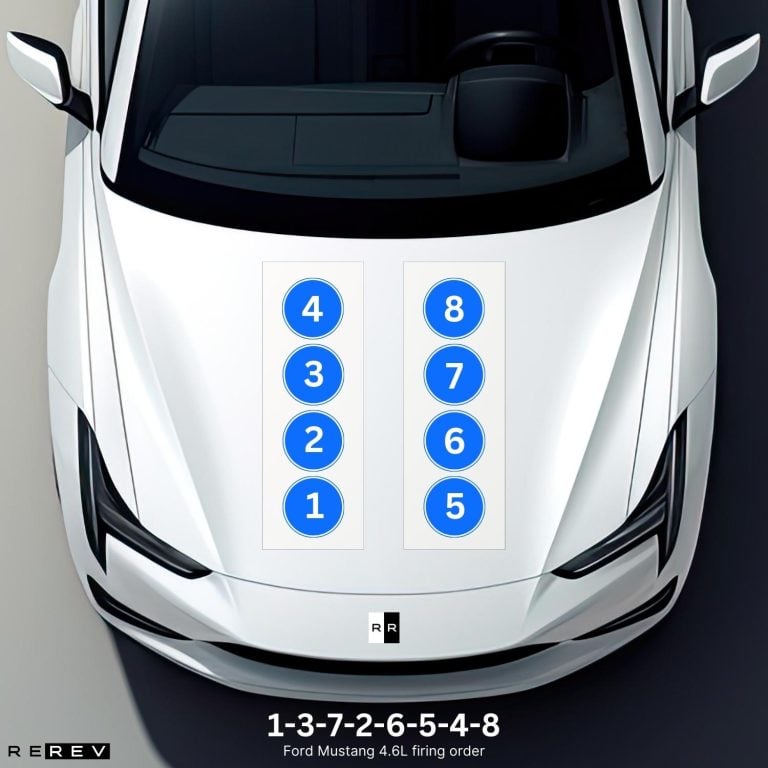
The Ford Mustang 4.6-liter firing order is 1-3-7-2-6-5-4-8 and this Triton SOHC engine has been used in the GT variant of the fourth-gen model.
For 2000’ to 2004 models, the engine was revised to host a new cylinder head, and the power output was increased. However, don’t let yourself be fooled by that – the firing order still remained the same as it was the same base engine, and that comes in handy when working on your GT.
Fifth-generation Mustang (2005-2015) firing order
The fifth generation of the Mustang gave the visual appeal of the true modern-age muscle car to the famous model. It may not have been as modern as the recent sixth-gen or the latest seventh-gen model, but it did pack quite a few engine options with different firing orders:
Ford Mustang 4.0L firing order
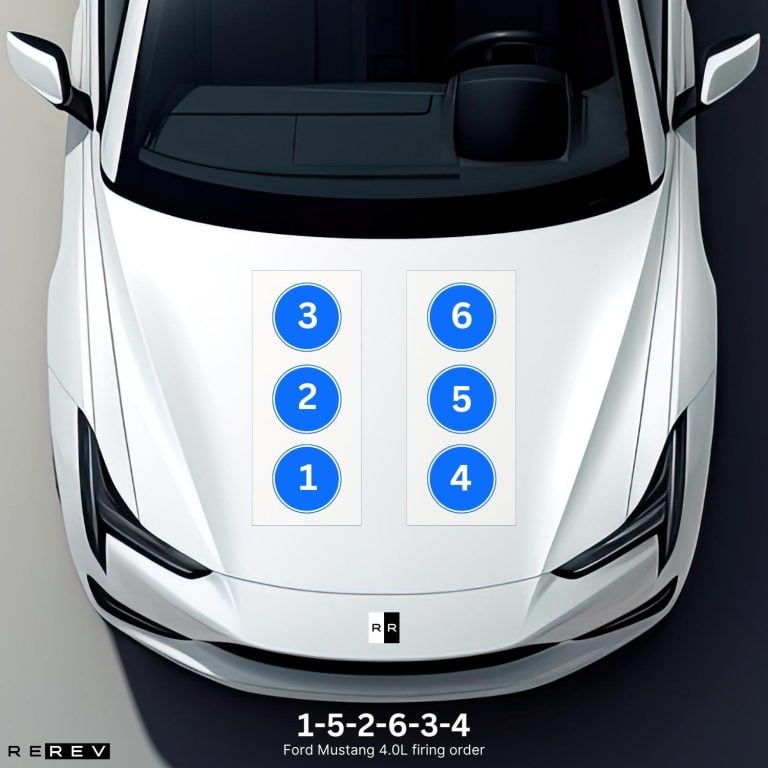
The firing order for the 4.0-liter Ford Mustang is 1-5-2-6-3-4, and this engine came as a successor to the previously mentioned 3.8 V6.
However, it didn’t share the same block so the firing order is different, and that’s an important thing to note if changing the coil pack.
Ford Mustang 3.7L firing order
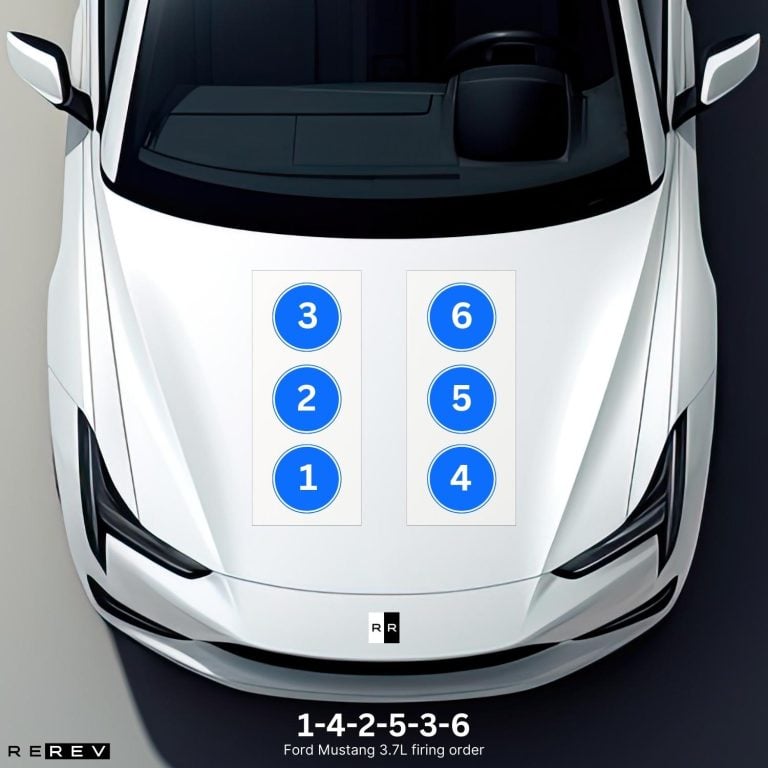
The facelift model of the fifth-gen Mustang wasn’t only visually remastered, but it also underwent some engine upgrades. So, the base engine from 2011 was the 3.7-liter V6 that saw a capacity reduction from the previous 4.0-liter one.
The 3.7-liter Ford Mustang firing order is 1-4-2-5-3-6. so it’s the same as it was for the 3.8-liter engine from the previous generation.
Ford Mustang 5.0L firing order
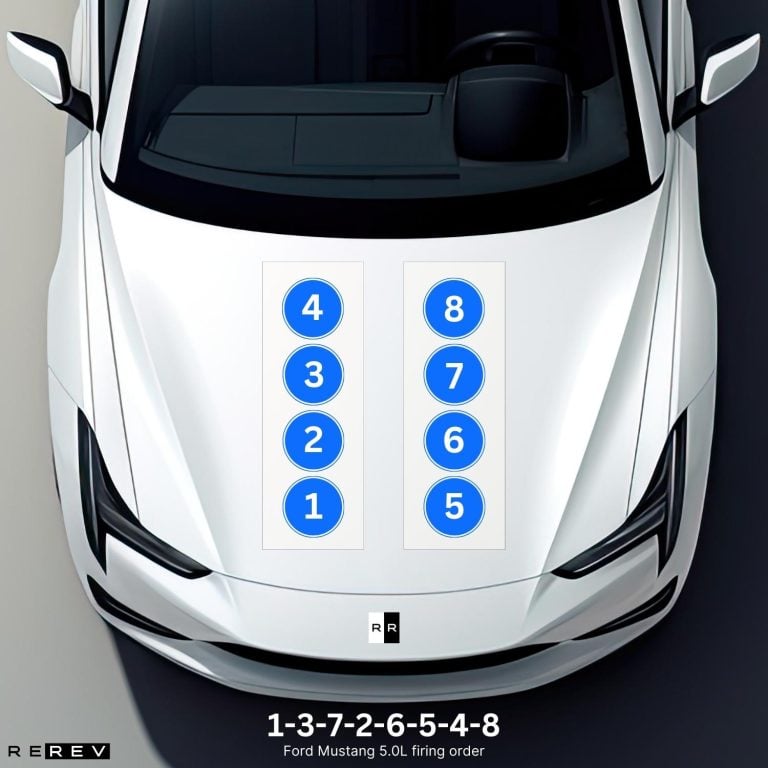
While the 4.6-liter V8 was still in use for the early fifth-gen Mustang GT, the 2011 and following model years got a revision in the form of a new 5.0-liter Coyote engine.
The 5.0-liter Ford Mustang firing order is 1-3-7-2-6-5-4-8, which makes it exactly the same as it was for the 4.6-liter engine.
Sixth-generation Ford Mustang firing order
As arguably the most sophisticated generation model, the sixth-gen Mustang stuck around for quite some time from 2015. It also came with some similar engine options like the 3.7-liter V6 which had the same firing order, only with a slight power increase.
Also, the same thing happened with the Coyote engine which proved to be reliable, so Ford left the 5.0-liter V8 in the GT version.
Still, we got a few new engines in this generation, most notably the 2.3-liter EcoBoost and the new 5.2-liter supercharged V8 from the GT500 model. Let’s see how these compare in terms of the firing order.
Ford Mustang 2.3L firing order
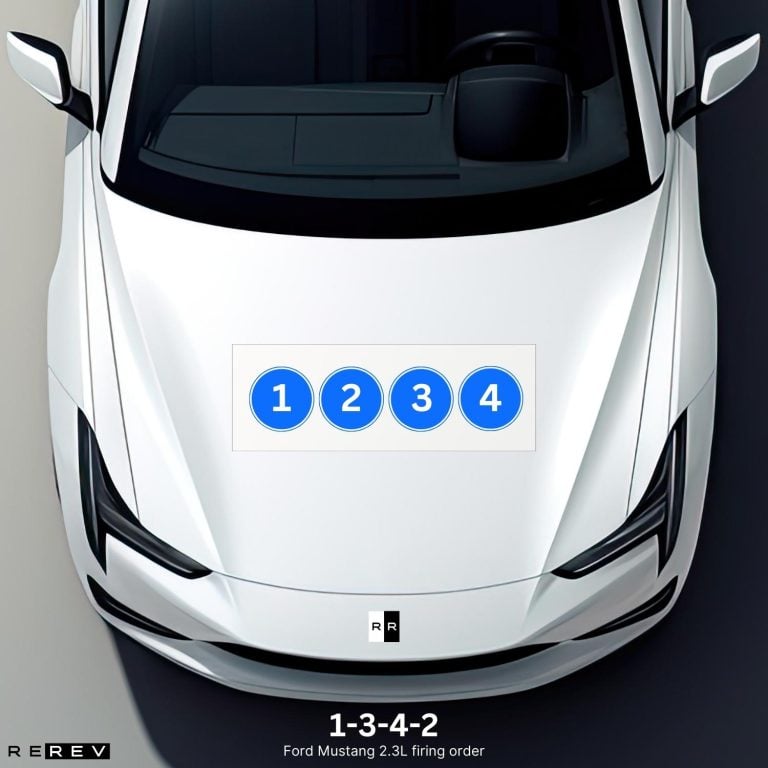
The firing order for the 2.3-liter Ford Mustang is 1-3-4-2 for the four-cylinder turbocharged engine.
It’s the first time that a Mustang model had an inline-four-cylinder engine under the hood, so the firing order is different from previous base-model Mustangs accordingly.
Ford Mustang 5.2L firing order
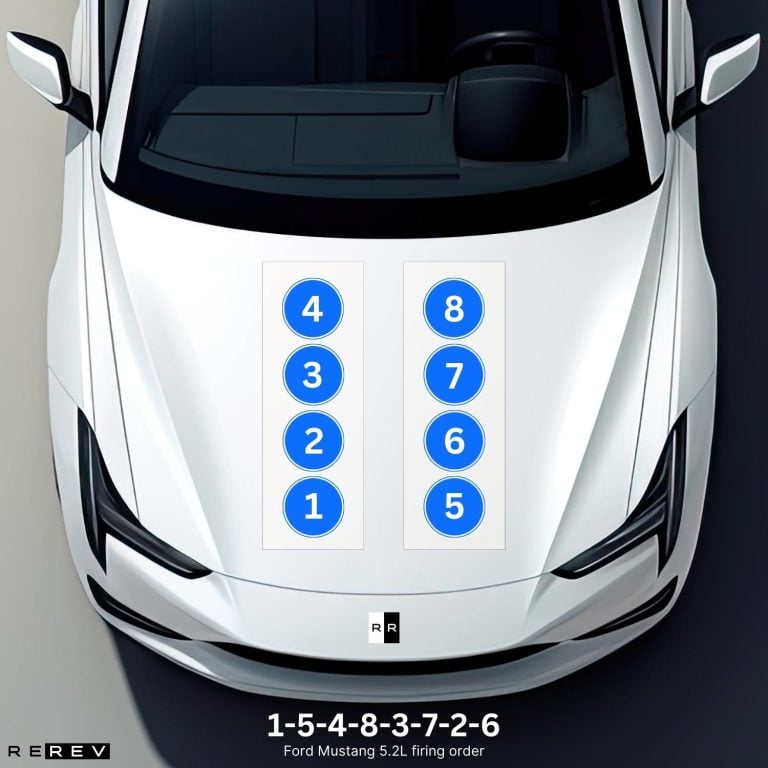
The high-performance Mustang GT500 model got a brand-new 5.2-liter V8 engine with 760 horsepower and made the most powerful Mustang variant up to date. The Shelby GT model had a slightly larger V8 under the hood than the previous GT.
So, the 5.2-liter Ford Mustang firing order is 1-5-4-8-3-7-2-6 since there’s a new “Voodoo” engine under the hood, and the firing order is different from the Coyote one.
Our take
Over the years, there have been quite a few different Mustang model engine options, and these were especially diverse from 2000 to 2023. So, we hope that this guide will help you stay updated on the firing order for your particular version.
Whether you have the EcoBoost, the GT, or even the GT500 Shelby, the information on firing sequences listed in this guide will cut your engine-related worries short, and make replacing the cams, plugs, or coils much easier.